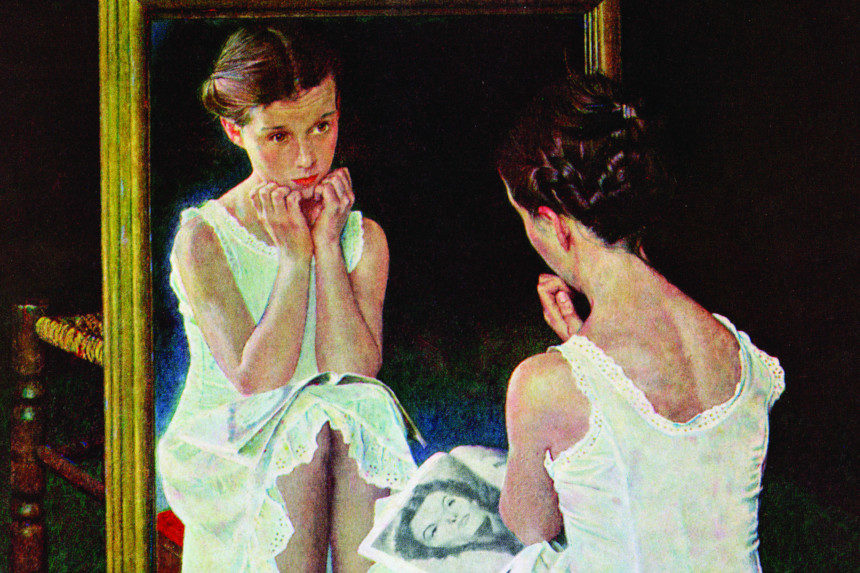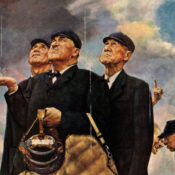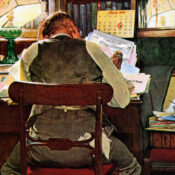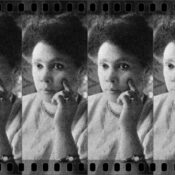Looking sorrowfully in the mirror, her doll tossed aside and a movie magazine in her lap, Rockwell’s model seems to be aware she’s about to leave childhood behind in this March 6, 1954, cover, Girl at the Mirror. What will the future hold? Will she be pretty? Will she be plain? These somber thoughts are accented by the photo of beauty queen Jane Russell she has been studying.
But what was she really thinking? Many years later, Rockwell’s model Mary Whelan told the Post she was only in fifth grade at the time and actually had never given much thought to growing up. To achieve the somber mood he wanted, Rockwell first asked her to imagine she’d finally outgrown all her dolls. Mary, a self-described tomboy, replied that she never played with dolls. So he suggested she simply picture herself as an adult and dream about all the things she would do with her life.
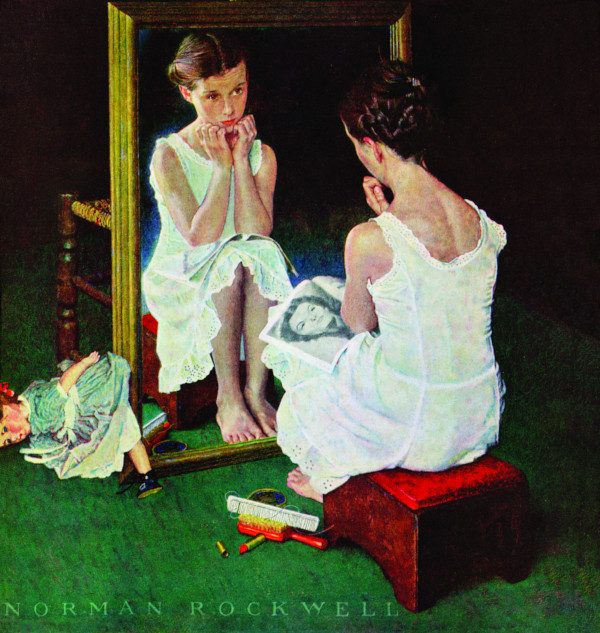
That bit of coaching induced the mournful look captured in the picture. It was an unusual work for an artist known for painting “life as I would like it to be,” but it could be argued that the painting is actually more a self-portrait than the study of a child. His acclaimed psychoanalyst Erik H. Erikson had long encouraged Rockwell to to try allowing his work to flow freely out of his unhappiness. In this instance, he succeeds, offering a rare glimpse of his melancholy side.
This article is featured in the January/February 2021 issue of The Saturday Evening Post. Subscribe to the magazine for more art, inspiring stories, fiction, humor, and features from our archives.
Featured image: Norman Rockwell / SEPS
Become a Saturday Evening Post member and enjoy unlimited access. Subscribe now
